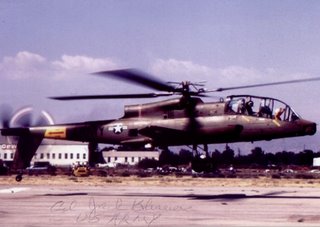Col. Emil "Jack" Kluever 1925-2011



 Jack Kluever was born 28th November 1925 in Brayton, Iowa. He was the youngest of seven children born to Emil C. and Louise A. Kluever. He joined the U.S. Army in 1944, training to fly B-25's so he could join his two older brothers, Arnold and Lester, in Europe in WWII. Jack's military career spanned 32 years from 1944 to 1976. He served two tours in Korea (2nd Infantry Division, 38th Field Artillery Battalion, 1952, and Commanded the 13th Transportation Helicopter Co., 1963) and one tour in Vietnam (Commanded AMMC, 1970). Jack enjoyed a love of education earning a B.S. in aeronautical engineering from Auburn University and M.S. in engineering management from USC, the Industrial College of the Armed Forces and the MBA program at UNLV. Also, Jack loved to fly, learning to fly over 67 different aircraft both fixed wing and rotor in his lifetime. He attended the U.S.A.F. Test Pilot School at Edwards A.F.B. in 1960, winning the A.B. Honts Trophy for Overall Excellence. He was a member of the Society of Experimental Test Pilots.
Jack Kluever was born 28th November 1925 in Brayton, Iowa. He was the youngest of seven children born to Emil C. and Louise A. Kluever. He joined the U.S. Army in 1944, training to fly B-25's so he could join his two older brothers, Arnold and Lester, in Europe in WWII. Jack's military career spanned 32 years from 1944 to 1976. He served two tours in Korea (2nd Infantry Division, 38th Field Artillery Battalion, 1952, and Commanded the 13th Transportation Helicopter Co., 1963) and one tour in Vietnam (Commanded AMMC, 1970). Jack enjoyed a love of education earning a B.S. in aeronautical engineering from Auburn University and M.S. in engineering management from USC, the Industrial College of the Armed Forces and the MBA program at UNLV. Also, Jack loved to fly, learning to fly over 67 different aircraft both fixed wing and rotor in his lifetime. He attended the U.S.A.F. Test Pilot School at Edwards A.F.B. in 1960, winning the A.B. Honts Trophy for Overall Excellence. He was a member of the Society of Experimental Test Pilots.A helicopter test pilot, Col. Emil "Jack" Kluever was detailed to NASA's Flight Research Center at Edwards Air Force Base, Calif., in the mid-1960s as a test pilot on the Lunar Landing Research Vehicles (LLRV). Kluever was the only pilot to fly LLRV No. 2, which was flown only six times during its brief flight test program at Edwards in early 1967. It was then transferred to Ellington Air Force Base near Houston where it was cannibalized for parts to keep the first LLRV and three Lunar Landing Test Vehicles used in the Apollo astronaut lunar landing training program airworthy. LLRV No. 2 has been partially restored and is preserved in the collection of historic aircraft at NASA's Dryden Flight Research Center at Edwards. Kluever also flew several test flights in the Paraglider Research Vehicle – or Parasev – at NASA's Flight Research Center in 1964. The Parasev was a small experimental craft designed to explore the potential of a flexible, fabric-covered Rogallo wing design as a means of enabling future spacecraft to glide to an airplane-style landing.While at Edwards, Kluever attended the Air Force Test Pilot School; he graduated with class 60B.
He had the honor of flying the replica of the Spirit of St. Louis which now hangs in the Lambert Field Rotunda. He served as the project manager for the U.S. Army/Lockheed Cheyenne Helicopter test program and command the Toole Army Depot.


<< Home